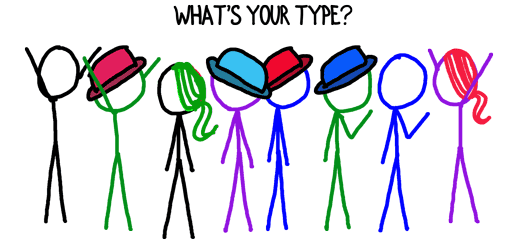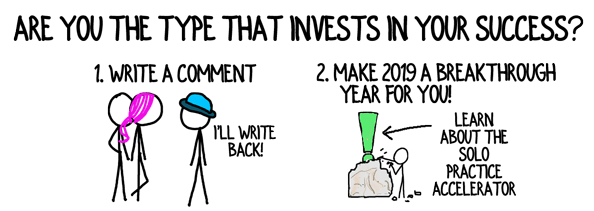As consultants, we are masters of a particularly human trait: simplifying. We boil down a confusingly multifarious muddle into orderly, digestible bites. We apply this ability to trends, situations, strategies, opportunities, and virtually everything else. Including people.
Yep, we will happily reduce incomprehensible complexity (which pretty much describes humanity) into a handful of characteristics (which pretty much describes tiddlywinks pieces).
This makes sense, of course. You don’t want to address your English-speaking clients in Korean, serve pastrami sandwiches to vegan prospects, or invite a supremely introverted decision-maker out to the disco.
To help you categorize, you may turn to popular psychometric schemes such as DISC, Hermman Brain Dominance, Meyers-Briggs, and Kolbe, just to name a few.
Knowing your consulting client’s “type” allows you to interpret his silence as satisfied agreement or frustrated disapproval. It directs the depth and content of your analyses, the style and substance of your presentations, and the frequency and tenor of your conversations.
There are countless ways to sort your clients, all of them correct.

Mini-contest: Count all the ways the 8 figures above can be divided into “types” based on observable characteristics. Type your answer in the comments and we’ll see how your pattern-recognition skills are faring.
On the other hand, all of these simplifications dehumanize other people a bit. You stop looking at the individual and, instead, look at the type then refer to your checklist for “dealing with this type of person.”
Classifying your client, Lenny Mallobar as a “Linear” absolutely helps you craft your communication to him; however, there’s a risk of overly focusing on Lenny the Linear and losing touch with Lenny the individual.
Individuals are more varied and inconsistent than types. Lenny may pay attention to details and the big picture. Egads! He will probably think, feel and act distinctly differently depending on who he’s with, what’s happened in his world recently and myriad other factors.
Instead of sorting consulting clients into a handful of types based on either-or dimensions, consider using a variety of characteristics to help you grasp the essence of each unique man or woman.
7 Useful Personality Markers For Understanding Consulting Clients
The seven markers below allow you to tailor your communication style and react appropriately to other people without losing sight of the individuals.
To what degree does your client…
- Focus on the details, the big picture, plans, and/or results?
- Exhibit a strong preference for being in control, controlled, and/or consulted?
- Desire information that’s in-depth, summarized, and/or bullet-point?
- Take on risk, mitigate risk, and/or pursue safe alternatives?
- Seek solitude, small teams, or large groups?
- Decide based on logic, emotion, principles, and/or impact on people?
- Prefer visual, verbal, and/or numerical explanations?
I encourage you to to assess other personality traits too, and I’d like to hear about your favorites in the comments section.
For each person, let the most dominant, helpful traits emerge, without regard to rigid structures, models, or philosophies.
Is there a right way to divide consulting clients into distinct types? I don’t think so. But, I’d like to hear what you think.
Do you use types? If so, what do you use and how do you find them useful?
Text and images are © 2024 David A. Fields, all rights reserved.

 David A. Fields Consulting Group
David A. Fields Consulting Group 

As someone who works in user research for software, I often go by behavioral types. This field is still emerging, but the key is people who choose a particular way to solve a problem. For consultants, it’s often helpful to work with people who believe that coaches are the way to succeed…even if those people are not terribly coachable! Changing human behavior is incredibly difficult and tends not to be sustainable, one reason (for example) that startups like Blue Apron are in trouble. It hoped to make it easier for people to cook dinner. Instead, it seems to be capturing people who *aspire* to cook dinner–great–but most of them can’t stick with it over the long term.
“Coachability” is definitely an attribute worth keeping an eye on, especially if your practice delivers value through one-on-one development.
You’re also right that changing human behavior is akin to teaching trees to walk. That’s one reason why Fishing Where the Fish Are is a fundamental principle in succeeding with a small consulting firm. Thanks for highlighting this idea also, Troy.
as always – some great insights! I realize that I am often reacting to the types – rather than proactively thinking about them in the early stages and managing them for the benefit of the client – and my sanity. thanks!
Sorting people into types and reacting to types is natural, normal, and, in many ways, beneficial. As you elegantly suggest, Aimee, pushing past that tendency in the early stages of your relationships allows you to create even more value for your clients.
What a great insight! As a business adviser in the early stages of building my business, it is all to easy to go after any client that has a problem I can solve, but I have realised that I will be most successful with potential clients that “get” me – I’ve been thinking a lot about DISC profiles because that is a tool we work with, but this approach is easier to apply in the course of a sales process, or the early stages of the relationship.
Congratulations on building a new business, Helen. It’s always an adventure and I wish you the best on your journey. Yes, it’s important to have sympatico between yourself and your clients, and taking the time to understand your clients (beyond the DISC profiles) will help you build a strong, positive connection.
Also, by the way, in the long run you’ll find it less easy to “go after any client that has a problem I can solve” than to choose one problem that many clients urgently want to solve.
Thanks for chipping into the conversation, Helen! Keep me up to date with the progress of your practice.
Interesting article… and I did try to count the various combinations and permutations, and got to north of 30 different ways to group before I had to stop… the important thing to recognize is that there are so many characteristics you can key on, and most of the “type” profiles aren’t nearly granular enough to recognize the uniqueness of individuals. Something to keep in mind when you’re trying to put people in boxes. The final example of individual characteristics that will impact the way you relate to and work that person in ways that will impact your practice/project is way better than trying to determine if someone fits into a particular pre-determined box, and forces you to treat the relationship as unique. Good show.
Wow, Jeff, I’m impressed. 30 different ways?! The human brain’s ability to infer patterns and correlations is simply astounding.
We know that paying too much attention to correlations can lead to baseless superstitions. (Except for the correlation between eating a cookie before a prospect call and winning a project–which is irrefutable.) Where we get tripped up is paying too much attention to correlations between people.
Good show, indeed, Jeff!
David, I have an engineering background and work for a A/E/C firm as the Business Development Manager. We heard about a software program called “Crystal Knows” from a boutique sales trainer out of DC.
Crystal Knows provides a personality profile for anyone who has a presence on line. It’s realitively inexpensive and has been fairly accurate. Curious if anyone else has used Crystal Knows in their business development?
Huh. Interesting, David. I’m not familiar with that software, but I’ll look into it, and we’ll see if anyone else in the community can provide guidance. Again, I’d suggest combining any profiling with your own, in-person, open-ended investigation into each person.
Thanks for the intriguing tip, David!
I’m familiar with Crystal Knows. It uses DISC as its basis. It can also be linked to your Linkedin account via your browser, so you can profile prospects before you meet them. I tried it once and it was surprisingly accurate.
Thanks for your perspective, Adrian. I looked at Crystal Knows also and found it to be interesting. It may be accurate partly in the way horoscopes are accurate–broad, generally applicable statements and users willing to ignore the parts that don’t apply.
You’re right that it rests on DISC and, therefore, it carries the benefits and risks outlined in the article. Stepping beyond types and focusing on the people is a recipe for better client interactions.